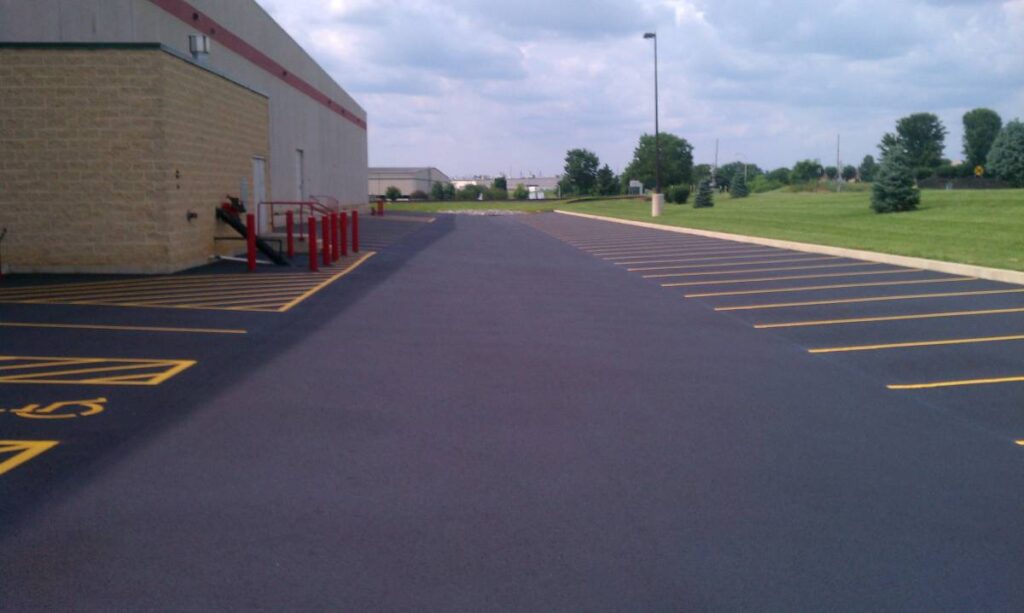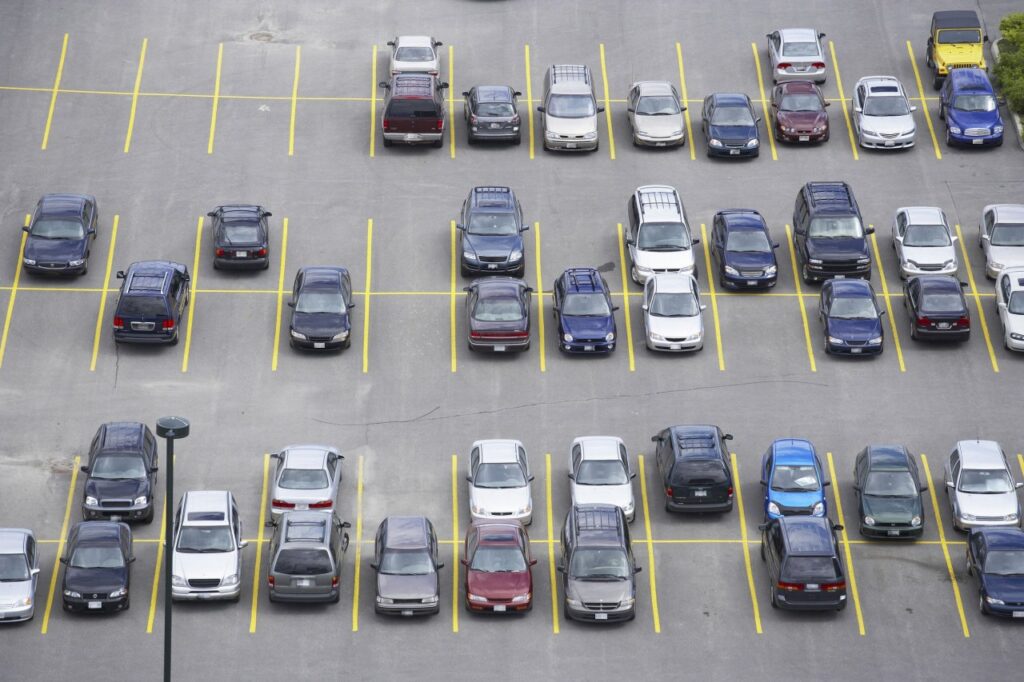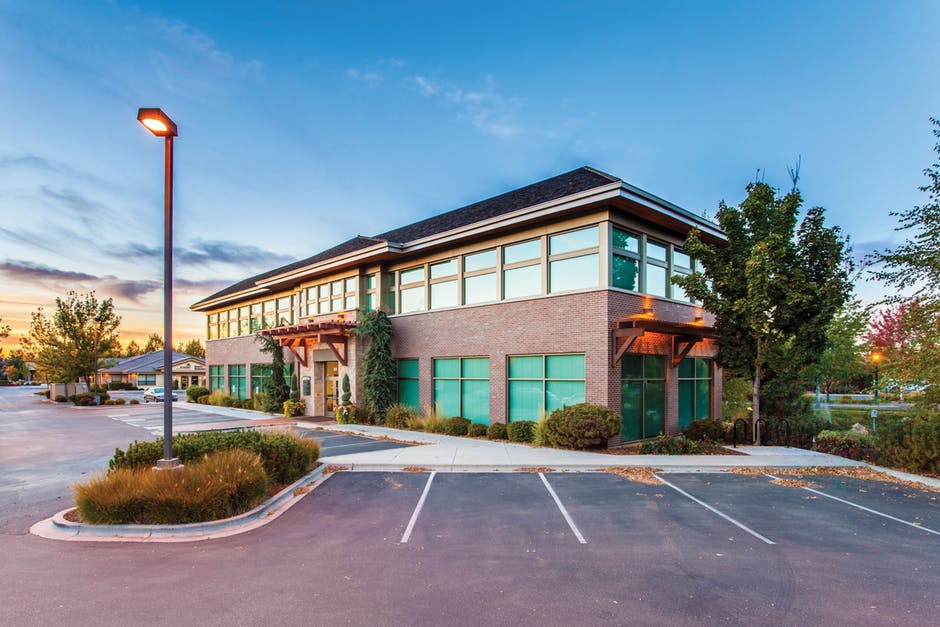Even though unnoticed, parking lot maintenance is equally important for the safety and functionality of businesses and property managers. These actions are aimed at maintaining and enhancing the parking lot’s appearance by resurfacing, resealing, and restriping. Such projects require permissions to obtain the necessary permits to preserve local norms and standards.
Understanding the Basics of Parking Lot Resurfacing, Resealing, and Restriping
Resurfacing a parking lot is correcting surface erosion by applying a new layer of asphalt or concrete. This method, which is a good one, increases the parking lot’s durability and longevity and, at the same time, enhances its appearance. Nevertheless, the resealing process ensures water penetration, cracking, and other damage is impossible by applying a protective sealant. Restriping includes repainting the lines and markings for the parking lot to improve the traffic flow.

Repairs have some goals. The resurfacing repairs cracks, potholes, and unlevel surfaces, while the resealing provides a protective barrier against the weather and wear. Restriping is used to lay down parking spaces, pedestrian walkways, and traffic lanes for order and safety. These projects can greatly help businesses as they attract customers, protect them, and make their lives easier.
The Importance of Permits for Parking Lot Maintenance Projects
The process of obtaining permits for parking lot maintenance is regulated for numerous reasons. The first permits ensure local laws and Building codes are followed. Safety standards are strictly adhered to, and the risk of accidents caused by inadequate construction or maintenance is minimized. The second reason why permits are required is that they ensure that contractors adhere to the industry standards. In addition, permits ensure that the project does not harm the environment or public infrastructure, protecting neighboring properties and communities.
Without permits, we can expect major problems to happen. It may result in the imposition of fines, work stoppages, and legal conflicts. Also, the infringement of regulations may bring to the picture poor workmanship and expensive repairs. Commercial entities and property owners must be aware of permits and regulations to avoid these problems.
Types of Permits Required for Parking Lot Resurfacing, Resealing, and Restriping
The scope of parking lot remediation projects varies; therefore, the permits needed are determined based on the project’s magnitude. Building, land use, environmental, and traffic control permits are some of the most common. The permit is issued for resurfacing and resealing because they change the construction of the parking lot. Zoning permits guarantee that the project will be in accordance with the local land use laws. Excavation or disposal may need to be approved by an environmental authority. Lastly, restriping projects require traffic control licenses to be able to divert the traffic flow.
Every permit must complete prerequisites before it’s approved. Some of these requirements may include submitting detailed plans and specifications, insurance verification, permission from other authorities, and cost estimation. Local authorities or permit offices should be consulted for permit needs in this case.
How to Obtain the Necessary Permits for Parking Lot Maintenance Projects
Planning and organization can make the process of parking lot maintenance permit applications faster and easier. Firstly, it is advisable to approach the local authorities or offices that take care of any permits for the project. After completing the permits, gather all the required documents and information for the application. Supporting documents could hold all the project blueprints, contractor licenses, insurance certificates, and other documents related to the project.

Submit Permission Application, Documents, and Fees after that. In order not to face delays and rejections, it is necessary to have detailed and precise applications. The approval period can be longer or shorter, depending on the project’s complexity and the local regulations. If there are delays, apply for a permit before the actual date.
Consequences of Failing to Obtain Permits for Parking Lot Maintenance Projects
Businesses and property owners’ concerns may arise from the operations of parking lot maintenance without permits. Maybe the first thing local authorities will do to you is fine you. The business finances can be heavily affected by the imposition of such fines. Violating the permit regulations can cause the interruption of the project and result in the delay of business operations.
Businesses have been unable to do business because of the lack of permissions. A particular case was when an urban restaurant owner laid their parking lot without permits. The restaurant closed much later when local authorities, having found the plight of the building, ordered a stop-work order. The owner of the business suffers from this as a consequence of fines and court expenses.
Lastly, parking lot maintenance permits shall benefit local compliance, motorists’ safety, and business and community protection. The parking lot’s resurfacing, resealing, and restriping are necessary for its functionality and appearance. Organizations can carry out maintenance tasks without fearing legal or financial consequences by knowing the importance of permission and taking the required actions to obtain it. First, Businesses and owners must secure the appropriate permits and abide by regulations to provide safety to the customers and be seen as welcoming.

